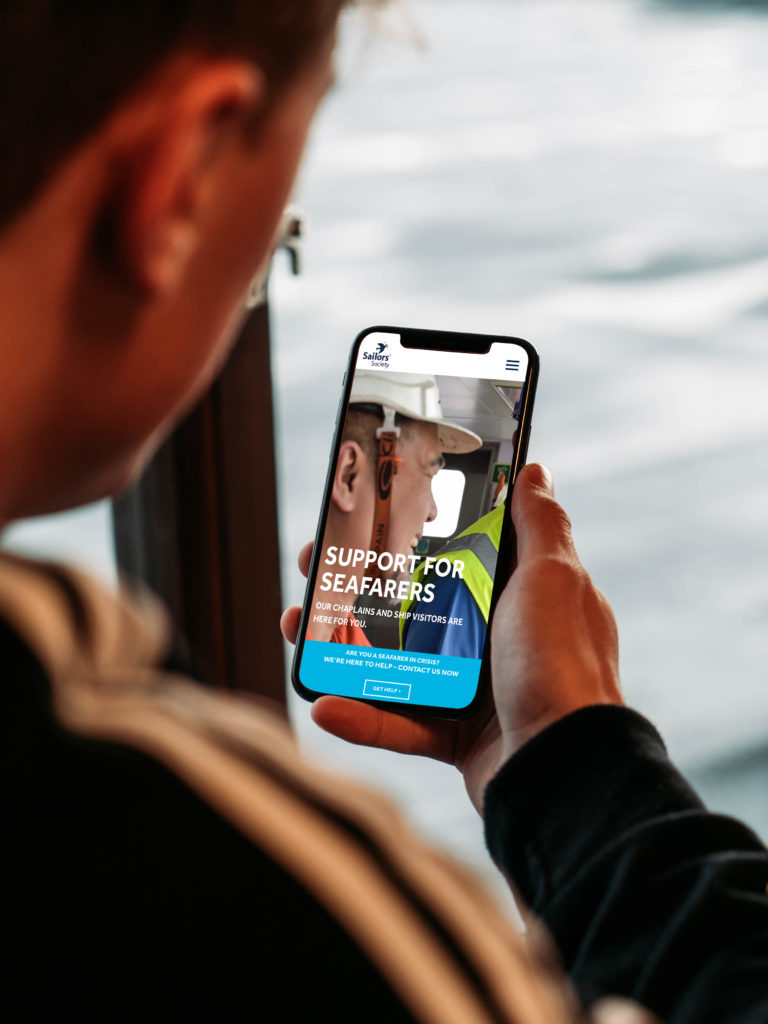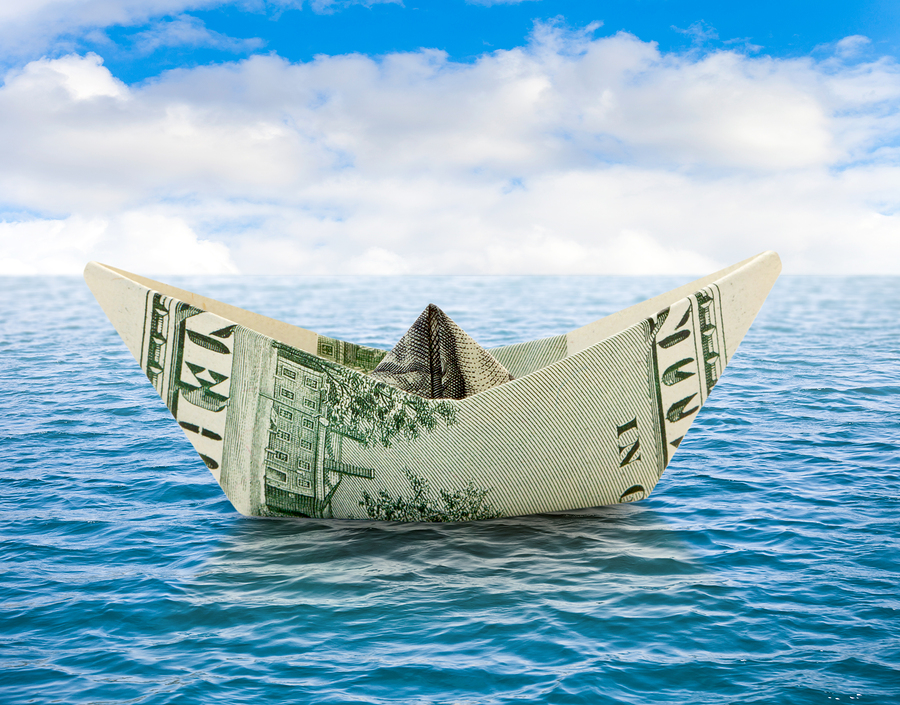Some ports are ow allowing for crew exchanges, but the situation is still far from resolved, writes Samantha Fisk.
The phrase ” contingency plans” is probably being used in Zoom and Skype meetings as much as “unprecedented” as the shipping and maritime industry responds to the impact of lockdowns and travel bans.
But perhaps the industry is now moving away from the sense of near panicked urgency into a stage of resignation as this new normal sets in, as we all wait to see what will happen. .
There are reports that some ports are beginning to allow crew changes, under strict conditions though, to ease a potential problem onboard vessels.
India, which has seen a number of stranded seafarers, has issued a notice through its Directorate General of Shipping to allow the transfer of crews on and off vessels in home ports.
This will not be helpful for seafarers on non-India bound vessels or who are currently stranded in other countries, but it is certainly a start. And other countries have also taken a more more pragmatic approach. Singapore, Hong Kong and UAE are also reported to allowed for limited crew exchanges providing strict conditions are met.
The problem is though that there are few, or worse no, flights.
The ship managers
While waiting for the opening of borders and airports, ship managers and owners have had to make some dramatic decisions. Not all are pleasant. Maersk for example has said it has cancelled all crew exchanges up to mid of May.
Bjoern Sprotte, the chief executive of OSM is relieved that the company has have an emergency contingency plan. It may not have been made for a global viral pandemic, but OSM has been able to tailor it to meet the challenges that it has created.
“Our long-standing expertise with ensuring crew safety and well being has certainly contributed significantly to manage the immediate impacts,” he insists.
Sprotte notes that for its fleet under full management that its disease control and outbreak management plans have now been activated to respond the pandemic. “These are part of our safety management systems and are continuously updated to reflect latest developments and guidelines, such as from Intertanko”, he says, “In general, the measures are targeted to protect the well being of the crew via monitoring and control.”
This includes obvious measures like getting the crew to take their temperatures, it extends to stringent access control for boarding of vessels. In addition, “pandemic kits” have been made available to crew though there is no mention of what is in each kit).
OSM is also offering free remote mental and physical health support to seafarers and their families at home via an affiliate company Nordic Medical Clinic.
Singapore-based Anglo-Eastern believes it has also been quick to react to the pandemic, stating that its earlier experiences with SARS and other outbreaks has also helped it prepare.
“Since the SARS epidemic of 2003, we have had a Business Continuity Plan that has been revisited from time to time, latest in connection with the social unrest events in Hong Kong during 2019″, explains Bjorn Hojgaard, CEO, Anglo-Eastern. “We have had a plan of action from the beginning of the Covid-19 outbreak.”
Keeping communications open with all involved is also key which OSM are also doing with third parties that it is involved with, through sharing best practice and provide extensive support to manage the COVID-19 impact. Sprotte also notes that OSM solutions are tailored to each customers’ needs and requirements, right down to the individual vessel.
The shipmanagers still insist that their main focus is the health and welfare of their crew. “The largest impact has been the restriction of seafarers travel which is a major concern as seafarers keep global supply chain functioning”, Sprotte comments.
Hojgaard also notes that Anglo-Eastern has seen little effect to its operations other than the initial issues of putting contingencies in place to protect seafarers. “The biggest challenge has been in replacement of the seafarers onboard when their term is due. But we pre-empted some of this by “going early” and actually relieve early from 2019 when it was obvious that the lock-downs were spreading.”
This means at the time of writing only 7% of Anglo-Eastern’s sea staff were overdue, but that umber is clearly expected to grow.
Measures have been put in to place that help protect seafarers, but also as they are travelling from destination to destination this is also causing a problem with isolation. “We have and will continue to limit potential exposure as far as possible and reasonably practical. This includes that we continue to pause crew changes. We are very conscious about the impact that this may have to our seafarers and families but for now, this appears to be the most appropriate solution”, Sprotte says.
Another issue with daily operations onboard has been training for seafarers, where once again like many in society, they have now had to adapt to a more virtual world to be able to carry out their training.
Virtual training
Sprotte comments about the switch to virtual learning that: “Our training activities provided by our Maritime Leaders Academy has already transformed to virtual classrooms for the majority of courses and we are adding new content weekly.”
Staying positive Sprotte believes that the company and those working for it will pull through this time by working together, but also looking to the future also expects that from this we could see changes to how we work as we have had to adapt to how we work through this period.
“We do expect that certain business activities may continue to be performed in a different way where technology has now helped as a contingency measure”, he concludes.
There will be lesson learned from this pandemic, along with digitalisation being pushed even further along by the sudden need that the crisis has caused and will see many look to accelerate its digitalisation strategies that it has in place.
However, Sprotte also notes that whilst there are positives that we can gain from this recent global crisis, there is still a more negative issue looming for the industry. “The larger fall-out, I think, will be a deep and long global recession, and that in turn will impact shipping”, he comments.
At the forefront of all this though is the actual crew, the ones that man and operate the vessels to make sure that the maritime industry can still operate. How these seafarers are getting caught up in this as they travel from port to port is a concern.
From a sailors perspective…
Charities such as The Sailors Society are seeing more calls for help both from seafarers concerned about financial support and from ship operator themselves to also help support crew.
Fathom World recently covered how International Seafarers’ Welfare and Assistance Network (ISWAN) is running crowd funding campaign for seafarers.
Crews around the world are on ships trapped in port, stranded thousands of miles from home and unable to return, while their loved ones are facing self-isolation – or sickness – alone. The charity highlights that the UK has given seafarers key worker status, but not all countries have followed suit, making crew transfers and repatriation practically impossible in many cases.
With ports around the world on lockdown, many seafarers are also wrestling with the worry of not knowing when they will next be able to work. One seafarer told the Sailors Society that: “I completed my contract on second March, could not sign off as we were in South Korean and Chinese ports. In Singapore today, cannot sign off as we were in China four days ago. I was to sign off from Colombo around the 22nd, reliever packed and ready with his ticket. As of Sunday, Colombo has suspended crew changes. Next port after Colombo is Lome, West Africa, a three-week sailing. Just heard even they have suspended crew changes… “Dunno how long we will get stuck here…”
The Sailors Society has responded to the crisis by opening up resources to both crew and their families through this time. The resources are practical information about COVID-19, support groups and advice hubs for those that are affected.
Gavin Allwright from Wind Ship explains that there is a lot of stress in the workplace for seafarers at the moment with crew exchanges delayed or cancelled the inability to social distance in the working conditions, seafarers in quarantine on vessels.

The campaign that ISWAN launched tackles those that may be stuck in a port that are far away from home without the financial assistance to get them back home. The concern that this could have a mental impact of the seafarers welfare, “My feeling is that there could be a severe impact on seafarers – mental health, job insecurity, recruitment and the retention of skilled workers in the future”, Allwright explains.
Furthermore, challenges of promoting the crowd funding campaign comes from both angles that of internally with the industry as well as promoting it outside the industry, where little is really know about the shipping industry. “ Getting your message out there is obviously a key one, but the need to deliver a balanced approach rather than a sensationalised one if a difficult line to walk”, Allwright adds, but also highlights that: “Are there a significant number of developing world seafarers (and others) falling though the gaps or likely to, and the answer to that is yes, how many we don’t know and how bad this will get we don’t know.”
At the moment the industry is operating with ‘all hands-on deck’ to help keeping the industry moving, but to also try and keep seafarers as safe as possible in these challenging times. Working in a global industry and encountering different restrictions is causing problems, but adapting and the use of technology is playing a key element in not leaving seafarers and their families stranded at a time of most need.

































